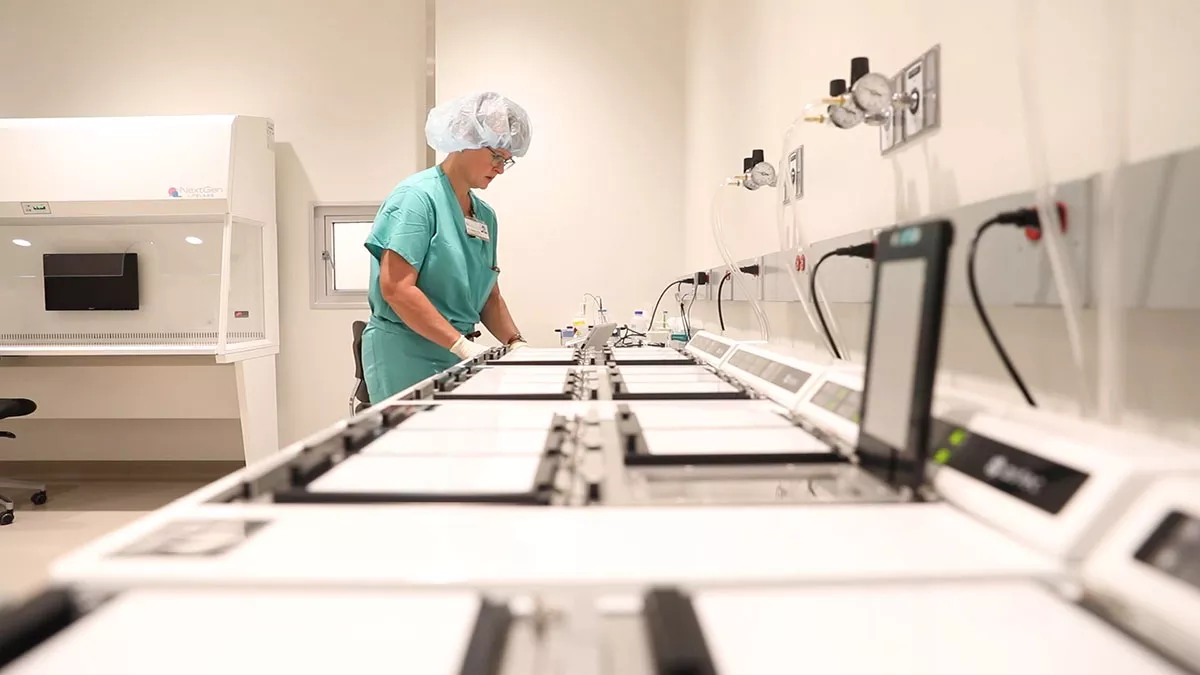The most precious cargo: What it takes to move embryos

What does it take to move an entire in vitro fertilization clinic? A police escort, hydraulic lifts, and months of planning, to name just a few things. The most precious cargo in this move is the embryos: and along with them, the hopes of hundreds of couples seeking to grow their families, one baby at a time.
“Those tiny clusters of frozen cells would someday become our children, and the IVF lab staff understood how important that was to us,” says Lydia Fine of North Liberty, who now has two children thanks to the IVF team at University of Iowa Hospitals & Clinics. “We knew our embryos were always in safe hands.”
The UI Center for Advanced Reproductive Care has moved its infertility services from the main UI Hospitals & Clinics location to UI Health Care–North Dodge. Follow-up men’s urology appointments are staying at the main hospital.
The new location features a state-of-the-art in vitro fertilization (IVF) and Andrology Laboratory, a top-notch security and monitoring system, waiting areas that protect patients’ privacy, and modern procedure rooms.
The big move
“We reached out to over 2,000 patients before the move via letter letting them know we’re taking care of their specimens and transferring them with the utmost of care,” says Amy Sparks, PhD, laboratory director.
About a dozen tanks were moved to the new North Dodge location, containing embryos, eggs, and sperm, as well as liquid nitrogen to preserve the specimens. Staff carefully monitored the conditions in each tank to ensure the temperature stayed below –175° C.
The university contracted with a moving company which specializes in moving highly sensitive materials, including for organizations like the CDC and NASA. Hydraulic lifts were used to move the tanks onto the truck, where they were secured with multiple straps. Lastly, a police escort was enlisted to ensure the safety of the truck and its contents, and a specific route had been planned with the smoothest roads.
Success rates to brag about
Having recently celebrated the 9,000th procedure at the University of Iowa, the center boasts an IVF success rate of 50% for women under the age of 35, which far outpaces the national average of 38.6%.
The new IVF lab also has new incubators, which Sparks believes will give them even better embryo quality. The incubators will allow them to maintain the embryos in an environment with a low level of oxygen (5%), similar to what they would be exposed to in the body, as opposed to atmospheric oxygen levels (18%). Each IVF case also now has its own enclosed space, providing more stable conditions, and a new monitoring system that allows staff to monitor all equipment remotely.
“This is an amazing field of medicine to be part of, to help patients build their families one baby at a time,” says Sparks.